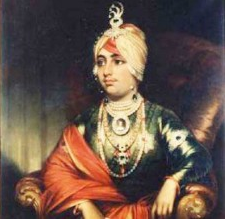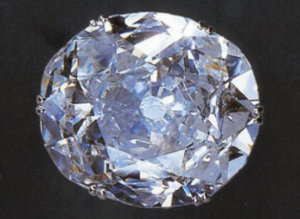
Kohinoor Jewel


Koh-i-Noor ( Persian for Mountain of Light), a large colourless diamond that was found near Guntur in Kollur Mine in Andhra Pradesh in the 13th century and weighed 793 carats ( 158.6g) was first owned by Kakatiya dynasty. The stone changed hands several times amongst various feuding factions in South Asia over the next hundred years before ending up in the procession of Maharaja Ranjit Singh, The Lion of Punjab – who wore it as an amulet strapped to his biceps. After his death, the stone with the throne went to his five-year-old son Duleep Singh. In 1849, the 10-year-old Duleep was forced to hand over his kingdom and the Koh-i-Noor to the British, following the British conquest of the Punjab in 1849.
Five years later he travelled to England, where he spent the rest of his life in exile.
Historians have recorded that Queen Victoria was acutely aware of the advantage taken of Duleep and she did not wear the Koh-i-Noor until he tacitly gave her the permission. In 1852, Prince Albert, the husband of Queen Victoria, unhappy with its dull and irregular appearance, and ordered it to cut it down from 186 carats (37.2g) and emerged 42 percent lighter, to give it a dazzling oval-cut brilliance weighing 105.6 carats (21.12g) and measuring 3.6cm x 3.2cm x 1.3cm. By modern standards, the cut is far from perfect as the culet is unusually broad giving the impression of a black hole when the stone is viewed head-on. As the diamond’s history involves a great deal of fighting between men, the Koh-i-Noor, is notorious for bringing bad luck to any man who wears it. And Since arriving in Britain, it has only ever been worn by female members of the British Royal family Queen Victoria wanted Duleep to forgive her for the manner of its confiscation. In 1854, he gave her “permission”.
After Queen Victoria’s death, the Koh-i-Noor was set in the Crown of Queen Alexandra, the wife of Edward VII, that was used to crown her at their coronation in 1902. The diamond was transferred to Queen Mary’s Crown in 1911 and finally to The Queen Mother’s Crown in 1937. When the Queen Mother died in 2002, it was placed on top of her coffin for the lying-in-state and funeral.
All these crowns are on display in the Jewel House at the Tower of London with crystal replicas of the diamond set in the oldest crowns.
